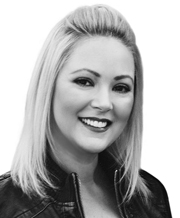So, I’ve been dealing with several cases of “scope creep†of late: when a copywriting project goes beyond the agreed-upon (in writing) parameters. We’d like to think it’s pretty cut and dried: If the project scope goes beyond what you contracted, they pay more. Period.
And, sometimes it is easy, and the client “gets it,†and you get your extra money. But as I’ve discovered, it’s a heckuva lot easier to talk tough when you’re discussing the idea in the abstract vs. being in the middle of a real-world situation and about to have an uncomfortable conversation with a commercial writing client. Especially if it’s your first gig with them. You want to stand up for what you’re owed, but, sometimes, you have to give to get.
(NOTE: You see my “(in writingâ€) bit above? Do not even think of moving ahead with any commercial writing project without some sort of written agreement (even if it’s just the simple one-pager I discuss in TWFW). I can’t believe how many commercial freelancers have sent me “What do I do now?†emails over the years, because what they discussed (i.e., as opposed to put in writing) with their client as far as a scope has now expanded, and the client doesn’t want to pay them any more. And while I’m sorry they’re going through that, they only have themselves to blame. ‘Nuff said.)
So, I had one of those gray-area projects recently. I was working with a graphic design team on a commercial project for one of their clients. After meetings with the end client, we submitted a creative brief to the client, outlining our proposed direction. The client signed off on the direction, and I came up with a first draft.
My design client loved it, and felt it nailed what the client said they wanted. But, after we submitted it, the client said, “Now that I see this, I realize that that (i.e., the concept that the project was based around, and which they signed off on) just doesn’t really capture what we’re all about. We’re really about this.†Pretty straightforward, right? They changed direction, so we renegotiate, right? Well….
So, he wanted us to rework the copy with a new direction. And not having worked with a creative team before, he just doesn’t get that he can’t just change direction in mid-stream, and expect that there won’t be a change in fee. Plus, they’re a non-profit and with a tight budget. And, stickiest of all, he’s such a nice guy, and so sincere and earnest (and yes, clueless in his way), that it’s just really tough to say, “No can do.â€
So, I discuss with my design clients, and while we both agree that it’s not right for the client to do this at no additional charge (and, this means more work for me, not them, since we’re not at the design stage yet), I make a decision. I say, “Listen, we’re right; they’re wrong. But, I’m happy to do another round if it makes them happy.â€
And I arrived at that decision after a simple calculation, and after looking at the big picture: How much work this design firm has given me over the past 2-3 years, how they never haggle over my fees, how they look out for me, and how hard they work to make my job as hassle-free as possible.
Viewed through that lens, it’s a pretty easy decision. Sure, if I stood my ground, they’d have totally understood, but by taking the high road, I absolutely endear myself to them.
They’re delighted and relieved that I’m willing to “take one for the team,†and they agree with me unequivocally, that if the client pulls this again, they’re putting their foot down in no uncertain terms.
This commercial freelancing business of ours is so great largely because we get paid very well, and by clients, who, overwhelmingly, know how the world works, and don’t play games over fees. And for every deal like this, where you eat some hours, inevitably, there are those gigs where you quote $4K, the client says, “Let’s do it,†and the project takes, only, say, 21 hours.
So, it all evens out in the end. Not necessarily with the same client, but across your client base as a whole. As such, you’ll ensure your happy longevity in the business by taking that long view, and knowing that while you may have to give here, you’ll get it back over there. And if, in the process, you can make solid money, and enjoy your work on most days, and, on your lifestyle terms, life is pretty good.
What’s your philosophy on projects that go beyond scope?
Do you take them on a case-by-case basis or stick to a firm policy?
Have you had a similar situation to the above, and if so, how did you handle it?
Any other comments or insights to share?
Want to be a guest blogger on TWFW Blog? I welcome your contribution to the Well-Fed writing community! Check out the guidelines here.


